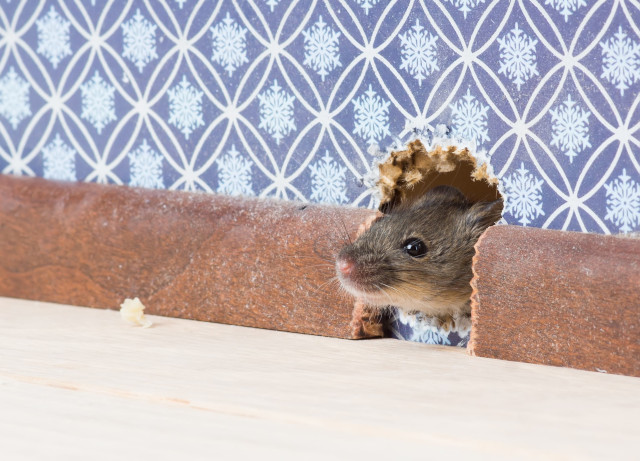Mice may be small, but their ability to enter your residence is surprisingly formidable. These cunning creatures can squeeze through spaces as small as a dime, making it imperative to fortify your home against their unwelcome presence. Sealing entry points to deny mice access is one of the most proactive and effective methods of rodent control. By mastering the art of sealing, you can construct an impregnable fortress against rodents.
The Vulnerable Points: Where Mice Gain Entry
Mice are resourceful in their search for entry points into your residence. They investigate every crevice and exploit even the smallest apertures. Common entry points include gaps around windows and doors, openings around utility lines and pipelines, vents, gaps in the foundation, and screens that have been damaged. In addition, rodents can use branches, vines, and wires as pathways to gain access to higher entry points.
Prevention is of the utmost importance
Not only does sealing entry points keep rodents out, but it also prevents an infestation from taking root. Mice are capable of rapid reproduction, and a small entry point can soon become a conduit for an expanding population. By sealing potential entry points, you prevent their entry and reduce the likelihood of an infestation taking root.
The Materials and Methods: Sealing Effectively
To effectively seal entry points, the proper materials and techniques are required. The following steps will help you get started:
- Begin by conducting a comprehensive inspection of the exterior of your residence. Look for openings, gaps, fissures, and crevices that mice could exploit.
- Collect Materials: You will need steel wool, caulking, weather stripping, wire mesh, and cement. These materials are durable and resistant to mice’s attempts to gnaw and nibble through them.
- Windows and Doors: Install weather stripping to eradicate gaps around windows and doors. Replace or repair any broken screens and check the condition of the door cleaners.
- Utility Lines and Pipes: Caulk or expandable foam should be used to seal gaps around utility lines and pipes. Mice can use these entryways to enter your residence.
- Vents and Chimneys: Cover vents and chimneys with wire mesh to prevent rodents entry and ensure adequate ventilation.
- Foundation and surface: Cement or mortar should be used to fill fissures and gaps in the foundation. Consider the areas where the siding joins the foundation.
- Cut back branches and vines that offer mice access to higher entry sites, such as the roof.
- Attic and basement: Inspect these areas thoroughly and use wire mesh or steel wool to seal any openings you find.
The Do-It-Yourself Versus Professional Help
While smaller apertures can be effectively sealed by the homeowner, larger or difficult-to-access entry points may require professional assistance. Experts in pest control have the knowledge and experience to recognize weaknesses that homeowners may neglect. Additionally, they can use sophisticated techniques and materials to ensure a thorough and durable seal.
Continued Maintenance: Remain Alert
Sealing entry points is a preventative measure, but it is not a one-time undertaking. Regular maintenance is required to maintain your home’s protection against rodents. As the seasons change and materials expand and contract, it is possible for voids to reappear. To maintain an effective barrier against these persistent intruders, schedule routine inspections and make any necessary repairs promptly.
A Mouse-Resistant Residence is Within Reach.
Sealing entry points is a fundamental and effective tactic for combating rodent infestations. By taking the time to identify and seal potential entry points, you create a formidable defence that discourages rodents from even attempting to enter your home. Sealing entry points is an investment in the long-term health and comfort of your living space, whether you do it yourself or seek professional assistance.
Affordable, accessible, and high-quality mouse control bowmanville. We remove mice from private and commercial properties with the help of our licensed and insured technicians that have years of experience.

